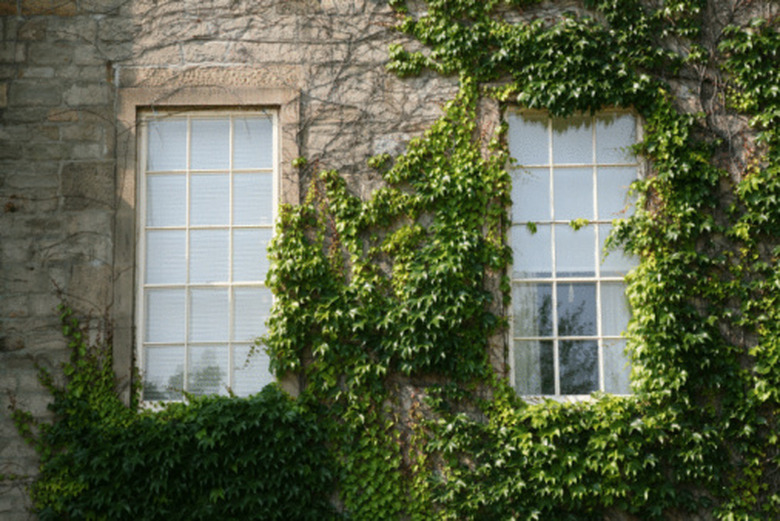When To Plant Boston Ivy
Boston ivy is actually a native of China and Japan. An attractive vining plant, its glossy green leaves become red or purplish in autumn. The vine is named after the city where it's widely cultivated to decorate buildings. In particular, Boston ivy is known for gracing the Ivy League colleges. Planting ivy at the right time of year gives it a healthy start.
Cultivation
Boston ivy is hardy up to USDA hardiness zone 4 and grows in a variety of soils, from light sand to heavy clay, as long as the site is well drained. Boston ivy grows best in full sunlight and tolerates some light shade. However, it will not survive in full shade. Select the planting site carefully, taking note of nearby buildings and plants. As it matures, Boston ivy grows as high as 50 feet, climbing up buildings and available support structures, including trees.
- Boston ivy is actually a native of China and Japan.
- As it matures, Boston ivy grows as high as 50 feet, climbing up buildings and available support structures, including trees.
Growth Schedule
Boston ivy is a fast grower; it is advisable to plant it at least 15 feet away from structures you don't wish to cover. The plant flowers in July to August. Flowers are pollinated by insects before reproduction begins. In October and November, the seeds created by the flowers are ripened. Seeds from Boston ivy may be harvested and cultivated to create additional ivy plants.
Planting Times
Harvest seeds from Boston ivy plants once they've ripened in fall, and plant immediately in a cold frame. Keep the seeds in a cold frame for approximately six weeks at a temperature of 41 degrees F. Once seedlings are big enough to move, carefully plant them in individual pots and allow them to grow through the winter. Boston ivy may be transferred outdoors in late spring and early summer, after the last frost date.
- Boston ivy is a fast grower; it is advisable to plant it at least 15 feet away from structures you don't wish to cover.
- Keep the seeds in a cold frame for approximately six weeks at a temperature of 41 degrees F. Once seedlings are big enough to move, carefully plant them in individual pots and allow them to grow through the winter.
Ongoing Care
Once Boston ivy plants are established in their permanent planting location, they are hardy to 5 degrees F. Even mature Boston ivy plants may be damaged by late frosts in spring; new growth may be killed or stunted by unexpected, late weather changes. Boston ivy plants may grow into gutters, and require a good deal of pruning and trimming to prevent the vines from wandering too far. The plant is very resilient to pruning, and may be cut down to a height of 3 feet above the ground.
